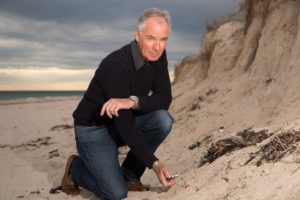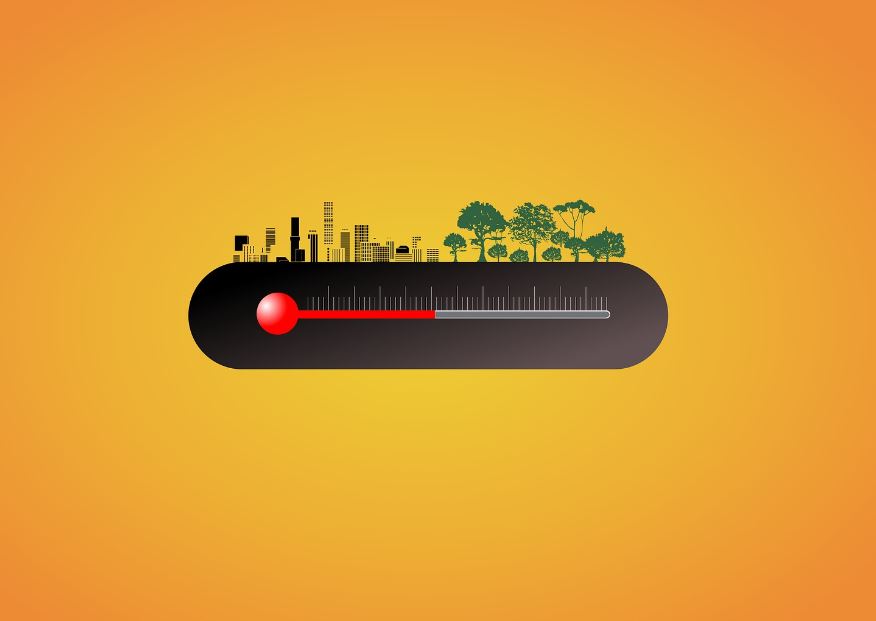
As temperature records tumble, and the threat of bushfires and dry conditions looms large, an international study by Flinders University and Argentinian researchers renews the urgency of calls to make more concerted efforts to prepare for climate extremes in South Australia.

Highs and lows in temperature and rainfall indices over the past 50 years have shown an increase in maximum and minimum temperatures of 1.1°C and 0.7°C and less precipitation while pointing to more intense and extended drought periods, extreme summer heatwaves alongside occasional extremes such as frost and flood.
“We found remarkable warming signal trends in both hot and cold extreme weather events,” says Universidad Nacional del Sur researcher Dr Federico Ferrelli in a new article supported by Argentina’s National Scientific and Technical Research Council.
The new study found similarities between long-term climatic changes in South Australia and temperate agricultural areas in Argentina – highlighting similarities across these Southern Hemisphere countries.
South Australia – often cited as the driest state on the driest continent – is poised to see more weather extremes in temperature and precipitation with more storm events, longer and more severe droughts and higher temperature peaks up to 3-5°C above current averages likely to follow global trends, the study shows.
“This reminds us that we need to focus on climate change mitigation and adapt sustainable management plans to better buffer ecosystems and human health and wellbeing, particularly in areas most exposed to these extreme weather patterns.”
Flinders University co-author Professor Patrick Hesp, an expert in coastal dune systems, says that if SA’s rainfall continue to decline according to such forecasts, “we can expect to see increased soil erosion in dryland agricultural regions and greater mobility of coastal dune systems – especially on western coast areas where mean annual rainfall is already quite low”.

The researchers used 24 climate extreme indices based on Bureau of Meteorology data to find a significant increase in extreme hot events – including summer days and tropical night temperatures – as well as daily maximum and daily minimum temperatures. While cold indices such as frost days show negative trends, heavy and extreme storms have become more severe locally while rain decreases regionally.
Land management practices, including less land clearance, native plant revegetation and more sustainable agricultural practices, is one step in the right direction.
While Argentina and Australia are economically different countries, the researchers emphasise that the imminent impacts of climate change are reflected in both temperate climate zones in the Southern Hemisphere and impacting on a global scale.
For instance, the Pampas Region in Argentina has experienced substantial increases in maximum, minimum and mean temperatures (1.8 °C, 1.2 °C, and 1.2 °C respectively), with some areas affected by falling precipitation and rising aridity.
“Therefore it is imperative to develop sustainable land management policies to address these issues,” researchers say.
“Global warming effects ecosystems, biodiversity, agriculture and food security, water resources and human health and wellbeing.
“It also contributes to economic and social inequities as vulnerable populations and developing countries are often the hardest hit by the effects of climate change.”
Including SA’s rising 1.8 million population, extreme temperatures could severely impact cardiovascular and respiratory diseases, vector-borne diseases and affect mortality rates, the researchers warn.
In light of CSIRO and other climate projections, the Australian and Argentinian scientists say the study further underpins the need to reduce greenhouse gas emissions and cap global warming projections.
Appraisal of Daily Temperature and Rainfall Events in the Context of Global Warming in South Australia (2024) by Federico Ferrelli, Melisa P Albisetti, Andrea S Brendel, Andrés I Casoni and Patrick A Hesp has been published in the journal Water DOI: 10.3390/w16020351.
Acknowledgements: The research was funded by the National Scientific and Technical Research Council and FONCYT and supported by Flinders University and the Bureau of Meteorology.







